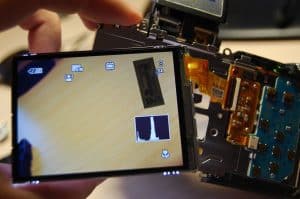Neural Processing Units: Brain-Like Computing
In our rapidly advancing technological world, scientists and engineers are constantly striving to create more efficient and powerful computing systems. One of the latest breakthroughs in this field is the development of neural processing units (NPU), also known as brain-like computing. Combining the principles of neuroscience and computer science, NPUs aim to mimic the structure and function of the human brain. In this article, we will delve into the fascinating world of NPUs and explore their impact on the future of computing.
What are Neural Processing Units?
At its core, a neural processing unit is a specialized electronic circuit that is designed to process and analyze data in a manner similar to the human brain. Unlike traditional computing systems that follow a sequential approach, NPUs use parallel processing to perform multiple tasks simultaneously, just like the human brain. This means that instead of following a fixed set of instructions, NPUs can adapt and learn from the data they receive, making them highly efficient and versatile.
How Do They Work?
NPUs are made up of thousands of interconnected processing units, also known as neurons. These neurons work together to perform complex computational tasks. Each neuron receives input data from other neurons, processes it, and sends an output signal to other parts of the NPU. This continuous communication and interaction between neurons allow NPUs to perform tasks such as pattern recognition, speech recognition, and decision making.
The Advantages of Brain-Like Computing
The development of NPUs has numerous advantages over traditional computing systems. One of the most significant benefits is their ability to learn and adapt. This means that as they process more data, they continuously improve their performance, making them highly efficient. Additionally, their parallel processing architecture allows them to handle large amounts of data in a fraction of the time it would take a traditional computer.
Moreover, NPUs are also designed to be energy-efficient. The human brain is remarkably energy-efficient, consuming only about 20 watts of power, whereas traditional supercomputers can use millions of watts. With the rise of artificial intelligence and machine learning, the demand for more powerful and energy-efficient computing systems has increased significantly, making NPUs a promising solution.
The Future of Computing
As the world becomes more data-centric, the demand for faster and more efficient computing systems is only going to increase. This is where NPUs have the potential to revolutionize the industry. Experts believe that NPUs will play a crucial role in the development of advanced technologies such as self-driving cars, intelligent robots, and smart homes.
Furthermore, NPUs also have the potential to improve medical diagnosis and treatment. By analyzing large sets of medical data, they can aid doctors in making accurate and timely diagnoses, leading to better patient outcomes.
In Conclusion
The development of neural processing units has opened up a whole new world of possibilities in the field of computing. By mimicking the structure and function of the human brain, NPUs have the potential to make our machines faster, smarter, and more energy-efficient. With continuous advancements and research in this field, the future of brain-like computing looks promising, and we can expect to see even more groundbreaking developments in the years to come.







